Through the Community-based Opioid Prevention and Education (C.O.P.E.) Project, Extension, public health agencies and Tribal nations, and other organizations partner with individuals, families, and communities to build upon existing community strengths. Working collaboratively, the team creates resources specific to each community and grounded in mutual respect and healing. The goal of this collective work is to develop meaningful relationships that result in sustainable recovery communities. The American Indian Resource and Resiliency team co-creates culturally responsive holistic health education and resources to address substance use disorders in Native communities.
The following examples from our partners are intended as stories of hope and points of inspiration for future projects to support recovery from substance use.
Harm Reduction and Medication Assisted Treatment in Indigenous communities
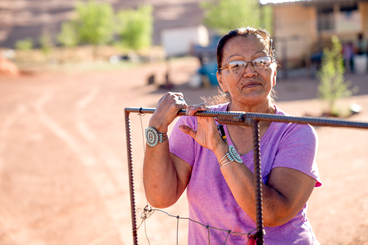
Harm Reduction and Medication Assisted Treatment in Indigenous communities, A panel discussion with members of the National American Indian and Alaska Native ATTC and the Minneapolis Indian Health Board
People who rely on harm reduction methods and Medication Assisted Treatment as part of their recovery from substance use disorder often face prejudice and stigma for their decision, including in American Indian and Alaska Native communities. Minimizing stigma is about maximizing understanding. A complete understanding about the forms and benefits of harm reduction in an American Indian/Alaska Native community setting could help reduce stigma around harm reduction practices, strengthen relationships between elders and community members who desire a connection with their culture, and ultimately save lives.
Presenter(s): Elder June Blue; Heather Benjamin, Indian Health Board's (IHB) Community Opioid Intervention and Prevention Health Educator; Dr. Dan Dickerson, addiction psychiatrist and researcher; and Jim Wikel, PSS.
Content themes: Harm reduction in indigenous communities (including medication assisted treatment).
Resources shared: American Indian Alaska Native Addressing Addiction Vol 8 Issue 1 Winter 2022: The focus of this issue from the National American Indian and Alaska Native Addiction Technology Transfer Center is harm reduction in the context of American Indian communities.
Native Center for Behavioral Health, Adult and Youth programs
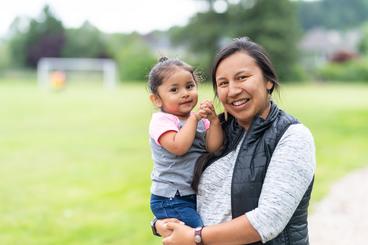
Native Center for Behavioral Health, Adult and Youth programs
The Native Center for Behavioral Health provides education, develops resources, and completes research centered around American Indian and Alaska Native children and families. Both national and regional Technology Transfer Centers also exist to support work on specific subject areas including addiction, mental health, prevention and tribal opioid use.
Presenter(s): Teresa Brewington, MBA, MEd, member of the Coharie Tribe and descendent from the Lumbee Tribe of North Carolina, Co-director, TSA, Program Director, K-12 Grant; and Dr. C. Allison Baez, Tap Pilam Coahuiltecan Nation-Aguateca Paguame Clan, Program Manager, K-12 School Supplement, National American Indian and Alaska Native MHTTC.
Content themes: Work done by the Native Center for Behavioral Health.
Resources Shared:
- Iowa Native Center for Behavioral Health: Learn more about the center and the Addiction Technology Transfer Center, the Mental Health Technology Transfer Center, and the Prevention Technology Transfer Center.
- Technology Transfer Center Mailing List: Sign up to get announcements, products, and resources from the Mental Health Technology Transfer Center Network.
- Products and Resources Catalog: Searchable database with free center resources and webinars.
- Fatherhood/ Motherhood is Sacred: Training program in partnership with NAFFA: contact Amy Fa'atoafe, NAFFA. executive director [email protected] for more information about their program(s).
- Positive Indian Parenting (NICWA): Resource that has been used for over 30 years to educate on cultural and traditional ways of raising children.
- Native Center for Behavioral Health Youtube Channel: Page hosts webinars and trainings from the Center.
Upstander Behavior: Being More Than a Bystander
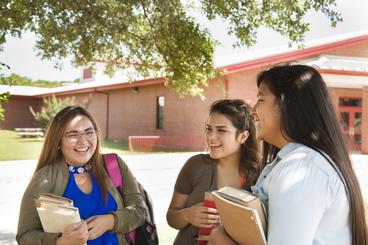
Upstander Behavior: Being More Than a Bystander
Upstander Intervention Training builds knowledge and skills to help students support their peers in unexpected and potentially harmful situations. Adapted from the Step Up! Bystander Intervention Training, this curriculum educates students on how to safely address many situations in a manner that is safe, early, effective and kind with the appropriate technique (such as direct, delegate or distract).
Presenter(s): Laura Bennett, CPPR, Regional Alcohol, Tobacco and Other Drug Prevention Coordinator: Northeast MN Region 2: Aitkin, Carlton, Cook, Itasca, Koochiching, Lake, and St Louis counties.
Content themes: Upstander Intervention Training, intervening, training
Resources Shared:
- Upstander Behavior Training Outline: An example Upstander Behavior program outline for youth leaders.
- Upstander Behavior (How to): Document outlining key steps and techniques to be an effective upstander and address important situations.
Harm Reduction Efforts in Minnesota
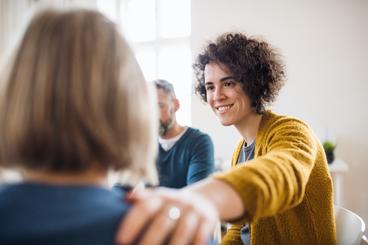
Harm Reduction Efforts in Minnesota
Harm Reduction Sisters is an organization based in Duluth, MN that provides supplies such as clean syringes, naloxone, fentanyl test strips and more to minimize the harm associated with substance use. Operating out of Northern Minnesota, Harm Reduction Sisters works to reduce the risk of overdose and infectious disease transmission among people who use drugs by providing support and identifying action steps to continue and expand prevention efforts.
Presenter: Sue Purchase, Founder and Director of Harm Reduction Sisters.
Content themes: Harm reduction, specific organization actions.
Resources Shared:
- Harm Reduction Sisters website: Website providing more background, education, and resources around the harm reduction efforts in Northern Minnesota.
Minnesota Student Survey
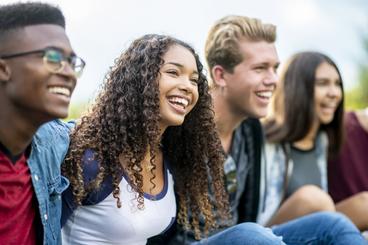
Minnesota Student Survey
Young people in Minnesota take the Minnesota Student Survey every three years. This survey operates through a collaboration between several state agencies and measures factors related to mental health and substance use. In Northern Minnesota counties, 2019 results showed an overall increase in mental health challenges (such as depression, anxiety and suicidal thoughts) from the previous survey but a higher rate of mental health challenges in female students. Protective factors such as a feeling of care from adults, teachers, and friends or involvement in an activity was associated with lower levels of suicidal thoughts, inappropriate prescription drug use and marijuana use.
Presenter: Jacquelyne Freund, Minnesota State Epidemiological Outcomes Workgroup (SEOW).
Content themes: Minnesota student survey (mental health/protective factors).
Resources Shared:
- Elevating the Youth Voices Through the MSS: Webinar series describing the MSS, ways to use the data, and success stories around use of the data.
- Minnesota Prevention Resource Center: Resource provides evidence-based strategies and library for resources on substance use prevention and mental health promotion.
- Power of Protective Factors for Minnesota Youth: Report summarizes the impact of protective factors on student mental health and substance use.
- Fact sheet, Absenteeism in Minnesota: Report describes the effect of missing school on student outcomes using MSS data.
- Substance Use in Minnesota: Creates customizable data report based using MSS data.
- Dept. of Education MN Student Survey Site: Website provides complete description of survey and includes survey results.
The Association of Substance Use Disorder (SUD) and Youth Mental Health
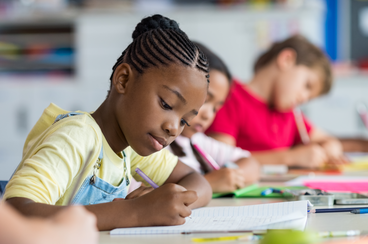
The Association of Substance Use Disorder (SUD) and Youth Mental Health
Students who have adverse childhood experiences (ACES) may have difficulty regulating their reactions and demonstrating skills in school. In fact, research shows that repeated stressful experiences can wire the brain to respond in a “fight, flight, or freeze” manner to situations that are not a threat. Teachers and schools can help minimize the effect of ACES by ensuring the student has multiple positive experiences through “positive relationships” with students and a school system ready to respond to a child who is struggling.
Presenter: Dr. Mark Sander, PsyD, Senior Clinical Psychologist for Hennepin County and the Director of School Mental Health for Hennepin County and the Minneapolis Public Schools.
Content themes: Adverse Childhood Experiences
Resources Shared:
- Elevating the Youth Voices Through the MSS: Webinar series describing the MSS, ways to use the data, and success stories around use of the data.
- Minnesota Prevention Resource Center: Resource provides evidence-based strategies and library for resources on substance use prevention and mental health promotion.
- Power of Protective Factors for Minnesota Youth: Report summarizes the impact of protective factors on student mental health and substance use.
- Fact sheet, Absenteeism in Minnesota: Report describes the effect of missing school on student outcomes using MSS data.
- Substance Use in Minnesota: Creates customizable data report based using MSS data.
- Dept. of Education MN Student Survey Site: Website provides complete description of survey and includes survey results.
Compassionate Responses to Family Addiction
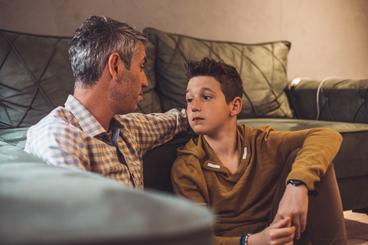
Compassionate Responses to Family Addiction: Small Changes, Big Results
4-part workshop including Changing Families, Changing Outcomes
Communicating both compassionately and effectively with someone in recovery can be challenging. In this four part workshop from Thrive Family Support, attendees learn how to move through difficult or uncomfortable situations and help family or community members on the path to recovery.
Presenter(s): Pam Lanhart and Laurie Healy, Thrive Family Support.
Content themes: Communication, family addiction.
Resources Shared:
- Family Healing Resource: Outlines research surrounding family recovery from substance use disorder.
- Thrive Family Recovery Resources: Website provides education and events to support families dealing with substance use.
Healthy Steps to Freedom Curriculum
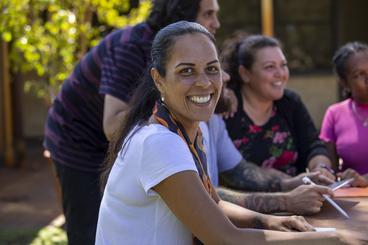
Healthy Steps to Freedom Curriculum, (Part of the Healthy Living, Sustainable Recovery Program)
Healthy Steps to Freedom curriculum provides a gender-responsive method to support recovery from substance use disorder. Gender-responsive treatment focuses on elements of substance use that are specific to people of a certain gender. Healthy Steps to Freedom addresses aspects of substance use that are more relevant to women including body weight, nutrition and body image. This program is specifically designed to help women in correctional facilities move forward in recovery from substance use.
Presenter: Anne R. Lindsay, PhD, FACSM professor & Extension specialist, University of Nevada Reno.
Content themes: Women, health, nutrition.
Resources Shared:
- Healthy Steps To Freedom Program information: Provides a description of the program, materials, and evaluation methods.
- Melemis S. M. (2015). Relapse Prevention and the Five Rules of Recovery. The Yale journal of biology and medicine, 88(3), 325–332.: Article describing steps to prevent relapse during recovery from substance use disorder.
Pregnancy and Recovery
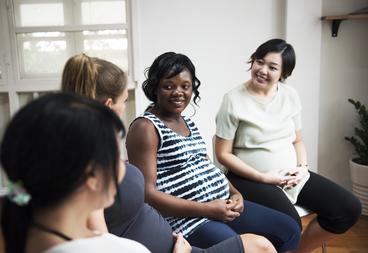
Pregnancy and Recovery
“Wayside Recovery Center has become an expert in delivering gender-specific and trauma-informed substance use disorder treatment and mental health services for women and their families. They provide a holistic array of care including outpatient and residential substance use disorder treatment, recovery support services, adult and children’s mental health therapy, long-term supportive housing, and family support services. Their vision is that all women, children, and families achieve healing and hope for their future free from the effects of addiction and trauma.” -excerpt from Wayside Recovery Website
Presenter: Nicole Fernandez, Maternal Child Health Community Liaison/Project Manager, Wayside Recovery Center.
Content themes: Women, pregnancy, addiction.
Resources Shared:
- Wayside Referral: Resource for providers to refer a patient to Wayside Recovery Center.
Screening, Brief Intervention, and Referral to Treatment (SBIRT)
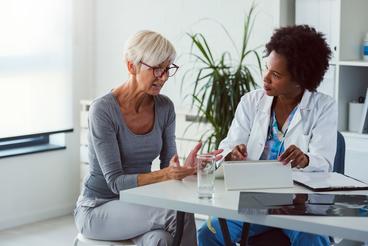
Screening, Brief Intervention, and Referral to Treatment (SBIRT)
Health care providers can use the Screening, Brief Intervention, and Referral to Treatment (SBIRT) method to assess a patient's level of dependency on alcohol or other substances and respond in a way that will help the person limit or stop substance use. Using motivational interviewing techniques to follow up with a patient about their level of alcohol or substance use has proven effective in reducing use. For patients with greater levels of dependence on a substance, the provider may refer them to treatment. Organizations interested in learning more can take a course from the Great Lakes Addiction Technology Transfer Center.
Presenter(s): Laura Saunders, State Program Manager, Wisconsin and Sherrie Nichols, Program Manager, Minnesota.
Content themes: Intervention, evidence-based practice.
Recovery Oriented Systems of Care
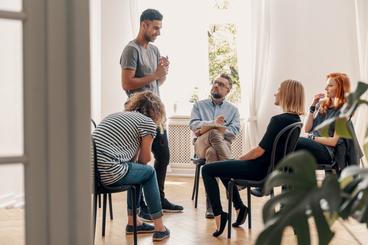
Recovery Oriented Systems of Care
Recovery-oriented systems of care build on pre-existing community “strengths” and resources to create an environment supportive of recovery where people with substance use disorder can engage with the programs and tools necessary to move forward in recovery. This type of system emphasizes substance use prevention and the development of recovery capital in a community. Community work and education completed by organizations like the Peer REcovery Center of Excellence and the Minnesota Recovery Connection help to support and develop recovery-oriented systems of care.
Presenter: Kris Kelly, Project Manager, Peer Recovery Center of Excellence.
Content themes: Intervention, evidence-based practice.
Resources Shared:
- Recovery Oriented Systems of Care (ROSC): Addiction Technology Transfer Center Network webpage with information and resources to develop ROSC.
- Peer Recovery Center of Excellence: Peer Recovery Center of Excellence webpage provides background of ROSC and more recovery resources.
- MN Recovery Connection: Recovery Community Organization created to support recovery in Minnesota.
Making a Change

Making a Change
This past summer, Aitkin County Sobriety Court participants in recovery from substance use had the opportunity to learn more about nutritious cooking and smart money management through the “Making a Change” pilot program. During a twelve week course, residents in recovery attended classes on Zoom where they learned how to make healthy dishes like chicken Caesar salad, turkey chili, and fish tacos while discussing important topics like toxic stress, mindfulness, and resilience. Participants also took an eight week, in-person course to gain insight into smart financial management and planning. Throughout the weekly classes, they learned valuable tips about saving and spending money, protecting themselves from identity theft, and guarding their information with strong passwords.
The program provided more than cooking and finance skills: it provided a community. One participant reflected on the class, saying, “It was what I looked forward to weekly not only for the information and the knowledge, but also to get me out of the house interacting with the instructors and fellow recovery people.” At the end of the program, all participants said they would recommend it to others. Another round of the program is in development for fall 2022.
Learn more about nutrition in recovery.
Creating Passions

Creating Passions
On March 20th, 2022, community members joined artist Jon Thunder for an afternoon of guided art therapy. The event, which took place at the Mille Lacs Casino, provided a space to heal unresolved grief, loss, and trauma. With instruction from Thunder, every participant painted their own version of a rabbit in a canoe. Extension educators helped support the event and shared a Mind Body presentation. Harm reduction supplies and resources about recovery from substance use disorder, such as nutrition, prevention through culture, or healing/coping, were also available for participants. With a turn-out of over 40 people, the program was well-attended and enjoyed by the community.
Nutrition in Recovery

Nutrition in Recovery
Supportive and healing nutrition therapy is a unique need for people during treatment and long term recovery due to the physical damage substance use disorders (SUD) can cause. Nutrition plays a key role in sustaining recovery, and research shows that nutritional care, in addition to social support, connection and sleep, can prevent people from progressing through emotional, mental, and physical vulnerabilities and setbacks that lead to eventual recurrence of use. Nutrition care teams can support individuals in a clinical setting, but support and education can also be provided in sobriety/treatment court programs, sober living homes and outpatient programs. When people in recovery receive support through all levels of care and have awareness of the importance of nutrition and self-care, engagement and recovery outcomes will improve.
Presenter: David A. Wiss, Founder of Nutrition In Recovery and Wise Mind Nutrition
Content themes: Nutrition, health, recovery
Resources shared:
Pine County Wellness Baskets
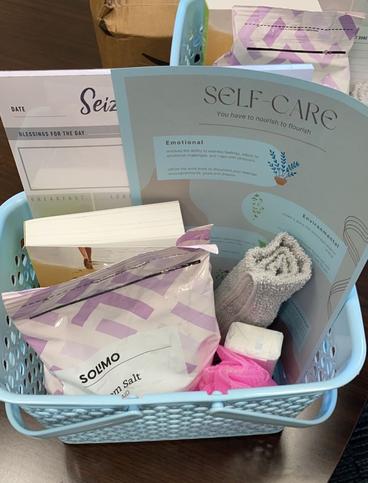
Pine County Wellness Baskets
Beginning in summer of 2021, Pine County's Department of Health and Human Services (DHHS) began distributing different types of "wellness baskets" to local residents who are seeking support and therapeutic services for substance use/misuse. Each basket is thoughtfully prepared by Jenae Hicks, Health Educator, at DHHS. Items in the basket include items such as fleece blankets, journals, cleaning and cooking supplies for those in a new living situation, easy recipes, health and nutrition information, products for personal hygiene and self-care. Around 75 baskets were distributed between June 2021 and June 2022. Residents have said that they “love” receiving the baskets.
Microdosing: What it is and is not.

Microdosing: What it is and is not.
The use of psychedelic microdosing to treat substance use and mental health challenges like depression and anxiety has become increasingly common. Psychedelics are drugs and plants that cause “non-ordinary states of consciousness”. While Indigenous cultures have long used psychedelics and entheogens in spiritual and medicinal contexts, renewed interest in recent years has resulted in a variety of studies to determine the effectiveness and safety of these substances. As medical understanding and use of psychedelics grows, it’s important to acknowledge and pay attention to the historical wisdom of Indigenous people while incorporating a trauma-informed perspective and harm reduction methods as well.
Presenter: Shannon Meyers, MS, CRC, CIMHP, MAPS Approved Psychedelic Integration Provider
Content themes: Mental health, recovery, psychedelics/entheogens
Resources shared:
- The Integrative Counselor: Find out more about Shannon Meyers, MS, CRC, CIMHP MAPS Approved Psychedelic Integration Provider on her website.
- The Microdosing Guidebook: This guide by C.J. Spotswood, a nurse with extensive background and research in psychedelic microdosing, explains microdosing and provides instructions to help providers and patients understand the treatment.
- C.J. Spotswood, PMHNP profile: Page describes Spotswood’s background in psychedelic research and mental health practice.
- Multidisciplinary Association for Psychedelic Studies (MAPS): The MAPS website describes the organization’s work in “research, education, and advocacy” for psychedelics.
